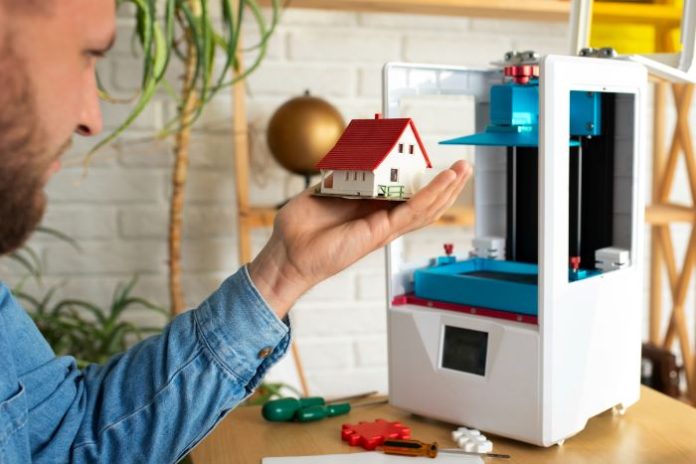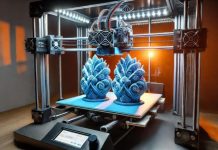If your garage or spare room doubles as a maker space, power planning isn’t a “nice to have.” Small CNC routers, spindles, vacuums, heated beds, and space heaters draw more current than most hobbyists expect. The good news is you can keep runs dependable and fires non-existent with a simple plan: know your loads, design for the worst spike, and let protective devices do their job to power 3D printers and CNC safely. The aim here is plain-English guidance for US workshops so you can print, cut, and mill without sweating the breaker panel.
Table of contents
- Know Your Actual Load to Power CNC Safely Before You Flip the Switch
- Powering 3D Printers and CNC Safely: Plan Circuits, not Wishes
- Protect Against Overloads and Faults Like a Pro
- Power Quality is a Hidden Variable—Especially with CNC Safely Operating
- Sequencing Beats Brute Force
- Cable Management isn’t Cosmetic—it’s Thermal Management
- Ventilation, Dust, and Moisture Change the Electrical Game
- When to Call an Electrician
- A Quick Word on Gear Upgrades and Tuning
- The Bottom Line: Powering 3D Printers and CNC Safely
Know Your Actual Load to Power CNC Safely Before You Flip the Switch
Check the sticker on the power brick or the plate on the tool. If the printer lists 300–350 W when heating and the small router pulls 8–10 amps at 120 V (that’s roughly 960–1,200 W), a single 15-amp circuit can get tight fast. Now add a 6-gal shop-vac that grabs 9–12 amps on startup and you see why breakers pop when everything kicks on at once. Use a clamp meter to measure your actual combo—printer plus enclosure heater, or CNC plus dust collection—and if you’re creeping toward 12 amps continuous on a 15-amp circuit (about 1,440 W by the 80% rule), plan a dedicated 20-amp run instead of gambling on luck A clamp meter makes this concrete: measure each device by itself, then measure the combination you actually use—say, printer plus enclosure heater, or CNC plus dust collection. If a combo lands close to the breaker rating, it’s not “efficient”—it’s risky.
As you map loads, keep duty cycle in mind. A bed-leveling routine or a rapid pass may be brief but can still nudge a marginal setup into a nuisance trip or warm conductors you didn’t intend to stress. Planning for the short spikes is what separates reliable sessions from maddening mid-print resets.
Powering 3D Printers and CNC Safely: Plan Circuits, not Wishes
In US garages and basements, it’s common to find older 15-amp circuits shared with lighting and outlets. That’s fine for light tools but fragile for combined workshop loads. Give hungry tools their own circuit. A trim router that pulls ~8 amps plus a shop-vac that grabs 10–12 amps at startup can push a shared 15-amp line over the edge. Build to NFPA 70 (National Electrical Code), tag the breaker and outlet, and leave some headroom—fewer nuisance trips, less line chatter, and far less temptation to daisy-chain strips.
If your gear supports 240 V, don’t assume you must rewire tomorrow; plenty of pros run reliable setups on 120 V with sane load management. The bigger win is labeling your panel and outlets, spreading loads across circuits, and leaving 20–25% headroom for inrush and heat on long jobs. You’ll thank yourself later when you add a second machine or an enclosure heater and nothing else needs to change.
Protect Against Overloads and Faults Like a Pro
Breakers, fuses, GFCIs, and AFCIs aren’t “optional performance penalties”—they’re the reason you sleep well. When you spec or upgrade, choose devices that match the real use: GFCI protection where moisture or concrete floors are in play, and AFCI where arcing from nicked cords or connections is a concern. If you want a refresher on how protection works and why it matters, OSHA’s plain-language overview of circuit overload safety explains the basics in the same practical terms you use at the bench.
Cord choice matters, too. A long, skinny extension cord can drop voltage and turn perfectly fine gear into a headache. If you must extend, use short runs and heavy-gauge cords matched to the load. Retire damaged cords immediately; “it still works if I wiggle it” is not a maintenance plan.
Power Quality is a Hidden Variable—Especially with CNC Safely Operating
It’s easy to blame software when a job stutters, but line quality is often the culprit. Short voltage dips (“sags”) from compressor starts, vacuums, or neighboring loads can glitch controllers and ruin surface finish. NIST research on CNC power quality documents how voltage sags and similar events can interrupt machine tools; the same physics applies in a home shop when a router suddenly loses steps or a controller reboots mid-path. If your machine is finicky, a line-interactive UPS for control electronics, separate from the spindle or heater loads, can buy you resilience without asking the UPS to power the whole workshop. Where sags are chronic, a dedicated circuit with shorter runs and clean connections is the long-term fix.
Sequencing Beats Brute Force
Start one device at a time and wait a few seconds between them. The worst case is a cold 3D printer bed, an enclosure heater, and a shop-vac spun up in the same moment; that combined inrush can pop a perfectly good breaker. Many makers solve this with muscle memory—vac first, then spindle, then job; or enclosure heater, then printer, then accessories. Smart PDUs and relays that stagger outlets are another option if you’re building a tidy control panel. Shut-down sequencing helps, too. Let heaters cool under supervision, then power down accessories, and finally the controller. It keeps fans moving air while hot parts are still hot and avoids yanking power from electronics that want a graceful exit.
Cable Management isn’t Cosmetic—it’s Thermal Management
Messy runs trap heat, get abraded by chips, and make troubleshooting miserable. A little discipline goes a long way: secure cords off the floor where they meet chips or solvent, avoid tight coils that act like heaters, and keep runs clear of belts, lead screws, and rails. If you’re building out a more permanent bench, the same logic behind structured cabling standards applies to your workshop: planned routes, labeled ends, strain relief, and bend-radius respect pay off when you’re diagnosing an intermittent drop or adding a second machine. If the idea of standards sounds abstract, think of it as future-you not cursing present-you when a print pauses at 2 a.m.
Ventilation, Dust, and Moisture Change the Electrical Game
CNC dust is conductive and abrasive; 3D printer enclosures trap heat and humidity. Keep power strips and connectors out of chip and fume paths, and don’t park them on the floor where a spilled coolant cup can find them. If your space sees winter condensation or summer humidity, lean toward GFCI protection and keep terminations inside boxes with proper covers. Good dust collection isn’t just for lungs; it runs your printer and CNC safely by keeping outlets clean and reduces the risk of arcs across dirty surfaces.
When to Call an Electrician
If you’re seeing frequent trips with reasonable loads, warm outlets, buzzing from panels, or mystery resets when unrelated appliances start, get a licensed electrician to check terminations, neutral/ground integrity, and breaker health. Upgrading a circuit or adding a subpanel is cheaper than replacing a burned tool—and much cheaper than a claim.
A Quick Word on Gear Upgrades and Tuning
If you’re adding a second printer or moving up to a stiffer router, revisit your power map rather than assuming the old setup scales. Consistency features—think auto bed leveling—use little beyond normal motion power, while a jump from a 220×220 mm bed to a larger, faster-heating plate or swapping in a beefier spindle can add real watts. Before you buy, skim the differences between a CNC machine and a 3D printer and match the choice to your circuit capacity and the kind of jobs you actually run.
The Bottom Line: Powering 3D Printers and CNC Safely
Safe power isn’t glamorous, but it’s what makes long prints and accurate toolpaths boring in the best way. Measure your loads, give each circuit breathing room, protect against faults, and clean up cable runs so heat and dust don’t create surprises. Address power quality if controllers act flaky, and don’t be shy about dedicated circuits when you’ve clearly outgrown a shared plug. Do those things and powering 3D printers and CNC safely becomes muscle memory you hardly think about—until the day it saves a job or your space.











